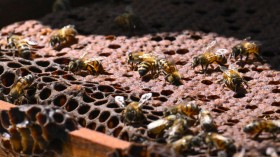The researchers of the National Center for Scientific Research and Grenoble Alpes University in France found out that baboons can make vowel sounds which is previously thought to be impossible.
This discovery provides clues to the evolution of human speech and suggests that our fundamental language started to evolve as early as 25 million years ago.
Science Mag said it was previously known that most primates, except humans do not have the ability ro produce vowel sounds because they do not have the anatomy for it. Monkey larynxes are set much higher than our own. However, this new research proves otherwise.
"It was thought that in order to pronounce vowels, you had to have a low larynx [voice box], as humans do," Joel Fagot, a primatologist at Aix-Marseille University in France and an author of the new study told the website.
How did they discover it? Tech Times said the researchers recorded and reviewed 1404 vocalizations of 15 Guinea baboons (Papio papio) living at a primate center in France. These included almost all types of vocalizations. They focused their observations on mouths from where the sounds are produced. During which they have detected five vowel sounds in their calls.
Meanwhile, Philip Lieberman, a linguist and cognitive scientist, and professor emeritus at Brown University told Christian Science Monitor that while the baboons' anatomy may be physically capable of producing vowel sounds, that doesn't mean they are capable of speech.
Fagot and the other researchers understand and agree to it, saying in the paper that what the baboons need to speak like human is a cognitive ability which they lack of.
"To be able to speak, you need much more than this," he said. "But clearly they seem capable of at least having some of the building blocks of speech, which is the ability to form vowel-like sounds," Fagot added. The study was published in journal PLOS One.
© 2024 NatureWorldNews.com All rights reserved. Do not reproduce without permission.





